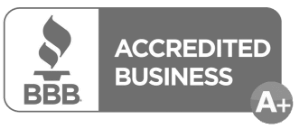Outside Insulation and Environment That Will Help Your Heating and Cooling
Whatever the season, you want to keep your comfortable air inside the house. That means caulking and weather stripping doors and windows, around chimneys and flues, and anywhere else inside air can escape. Be sure to check for cracked or broken shingles, crumbling grout, and worn or torn vapor barriers, too.
Inspect the exterior of your home once or twice a year. A good way to remember is to do it when you have your regular, professional HVAC check-up because heating and cooling will be on your mind anyway.
For Comfort AND Efficiency...
Submit a request,
Or give us a call.
860-633-6122
Keep vegetation and debris well away from the outdoor unit of your system. They can block air flow, which forces the system to work harder to produce the same level of comfort. You’ll spend more now … and in a few years, when the equipment fails prematurely and you have to replace it.
However, use vegetation to keep your home cooler in summer and warmer in winter. For example, plant a row of trees on the side of your home the wind usually comes from. They’ll act as wind blocks. Because deciduous trees lose their leaves in the winter, they’ll let in the sun’s light and warmth in winter; in the summer, they provide cooling shade. Do, however, be careful about how close you plant anything to the house, and take into account that trees and shrubs grow. They can block light, and in some areas of the country become highways for such pests as carpenter ants. A local landscape architect, reputable garden center, or the state or county extension agency can help with plant selection and placement.
Home Interiors Energy Saving Tips
Set the thermostat at the highest comfortable level in the summer and the lowest comfortable level in the winter. A change in one degree changes energy consumption by about 4%. Humidifiers and dehumidifiers can make a huge difference in how the temperature feels.
Install a programmable thermostat. It will automatically adjust the temperature at night or when you’re not going to be home for a long period of time.
Lights are a source of indoor heat, a problem in the summer. Wherever possible, replace incandescent bulbs and fixtures with compact fluorescents. They use a lot less energy, produce less heat, and last longer. Today’s fluorescents aren’t like those of only a few years ago – you can choose a warm, yellow light similar to incandescent light. You can use them in table lamps, ceiling fixtures (including ceiling fan fixtures), torchieres, and for indoor and outdoor lighting. Some can be used with dimmer switches, too. Avoid halogen lamps. The light is clear and bright, but they create more heat.
In the summer, keep drapes and blinds closed on the sunny side of the house during the day. In the winter, open them to take advantage of solar heat but close them at night to help block cold air (even if you have insulated windows).
Insulate attics, crawl spaces, basements, and walls to the “R” value recommended for your area. Your HVAC contractor can tell you how much you need. Don’t forget to insulate ductwork in un-conditioned space.
Use a gas fireplace or put glass doors on a wood-burning fireplace. (Be sure to check with the manufacturer first – some small fireboxes with zero-clearance flues cannot be outfitted with glass doors.) Keep the damper closed whenever you’re not using the fireplace.
In the summer, do your household chores during the coolest part of the day if possible. Cooking, laundry, washing dishes, and heavier work such as vacuuming are examples. Check to see if your electric utility offers time-of-day pricing. That could save you even more money.
HVAC System Tips
Check filters regularly and clean or replace them when needed. Your HVAC technician will tell you how often that’s likely to be based on the manufacturer’s recommendations and local air quality conditions.
Make sure room vents are working properly. Close them at least part-way in rooms you’re not using. Never block them with furniture, pictures, or window coverings.
Consider a zoned system if your home has two or more stories or is very large. A programmable thermostat in each zone can save energy and money.
Then sit back, relax, and enjoy year-round comfort!
© Air Conditioning Contractors of America Association, , www.acca.org. Reprinted with permission.




